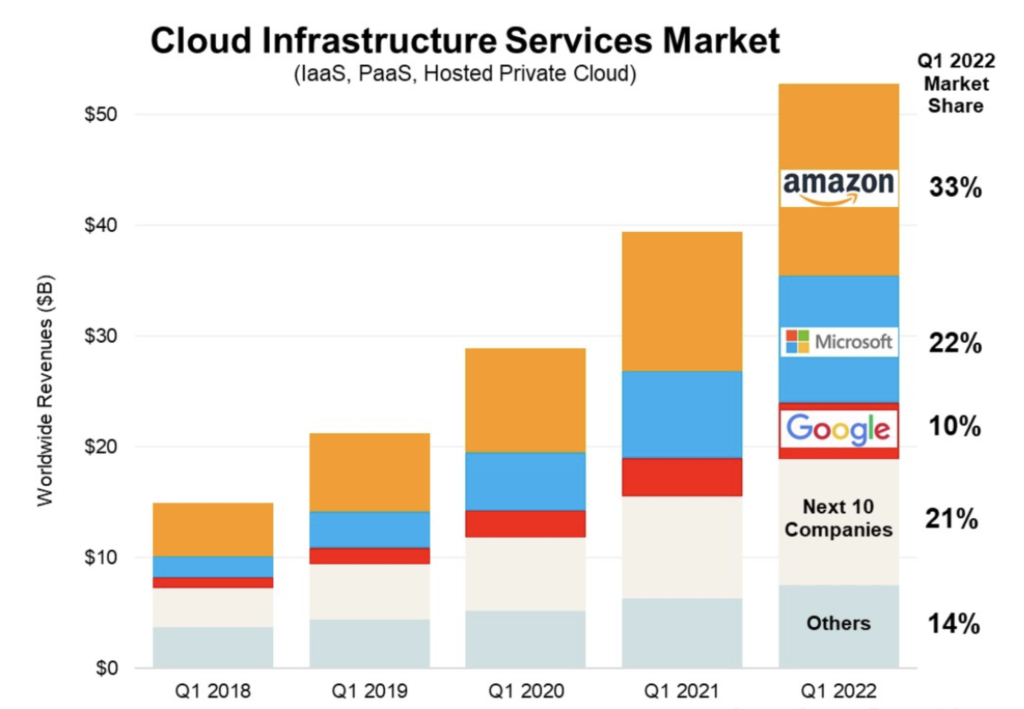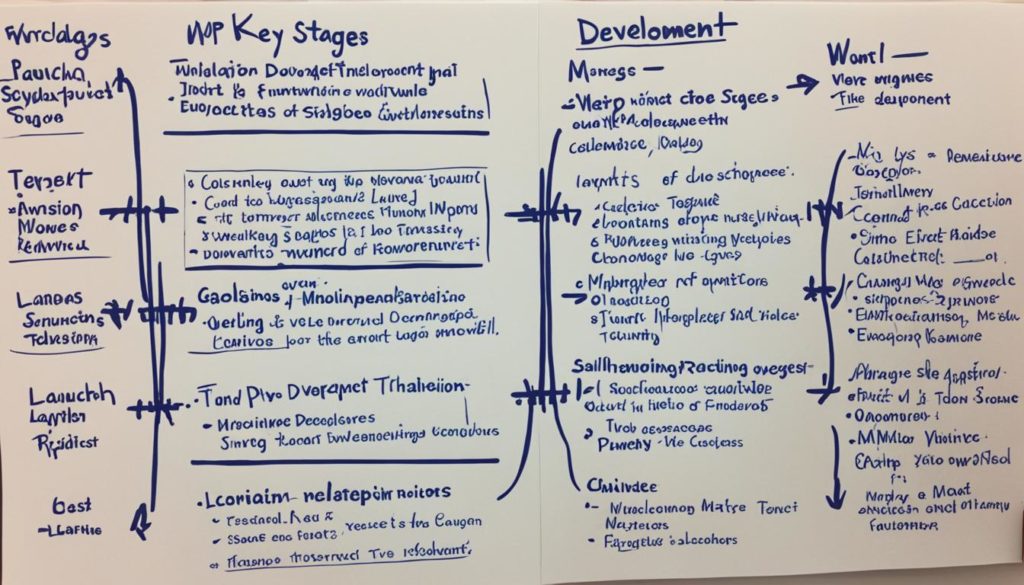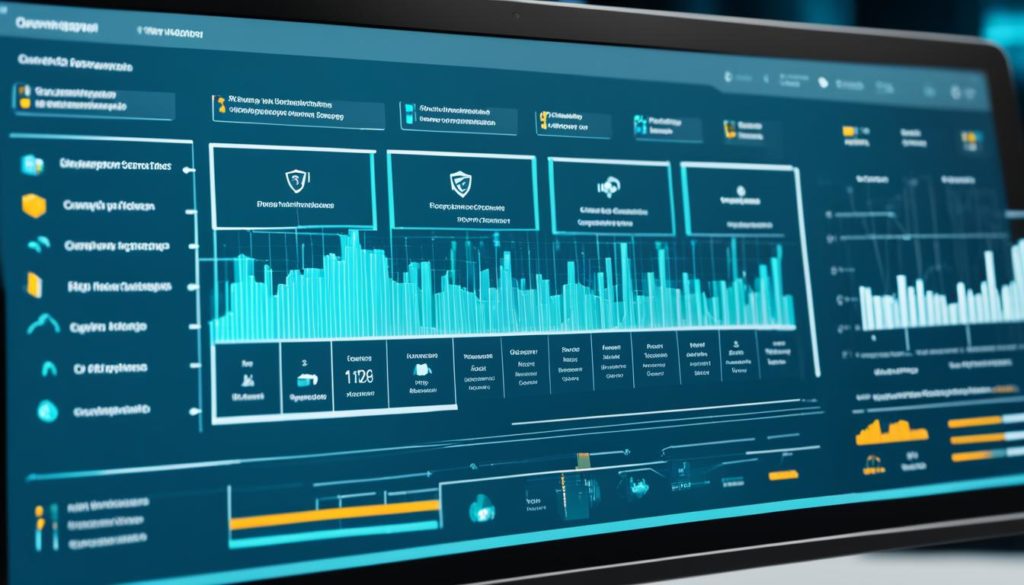
Startups and small-to-midsize firms are turning to cloud infrastructure to meet their growing needs for data processing, storage, and computation. However, this shift can also increase costs, similar to payroll and office rents, especially for companies with changing workloads. Cloud Cost Optimization is crucial for managing these expenses and moving towards more economical cloud options. It provides a way to better see and use resources, finding the right balance between cost, speed, security, and availability. This ensures savings on cloud costs and a stronger position in the market.
Key Takeaways
- Understanding the rise in cloud infrastructure reliance is key to initiating cost optimization
- Cloud Cost Optimization aligns business goals with cloud spending to avoid wasteful expenses
- Effectively right-sizing cloud resources curtails over-provisioning and maximizes value
- Predictable pricing models from cloud providers contribute to informed budgeting decisions
- Regular monitoring helps to identify and eliminate unused or unattached cloud resources
- Adopting strategic cloud cost management practices can significantly improve overall competitiveness
Understanding Your Cloud Spend for Effective Management
To start managing cloud costs well, you must understand your cloud bill clearly. This means looking closely at each part of the bill. It helps you spot where money can be saved. You’re not just cutting costs; you’re making sure your money supports your business goals. By smartly analyzing cloud costs, companies can save up to 28% of their cloud budget.
Deciphering the Cloud Bill
Looking at your cloud bill can feel like solving a puzzle. You must check each charge carefully. Tools from AWS can help with this, offering insights and ways to save money.
Analyzing Compute, Storage, and Bandwidth Costs
Understanding your costs for compute, storage, and bandwidth is crucial. By optimizing these, businesses can save 15 to 25%. Using different AWS pricing options can offer even more savings.
The Impact of Discounts and Savings on Your Total Bill
Leveraging discounts and bill consolidation is key to saving on cloud costs. For example, Delhivery saved 15% in just 50 days by closely monitoring and managing their AWS usage. AWS also provides useful spending forecasts and alert settings to keep budgets in check.
| Service | Cost Optimization | Tools and Recommendations |
|---|---|---|
| Compute | Up to 25% savings | AWS Cost Explorer |
| Storage | Use of S3 Intelligent-Tiering | AWS Pricing Calculator |
| Bandwidth | Data transfer plans | Volume-based discounts |
Managing user permissions and using AWS tools properly helps maintain budget control. This lets organizations focus on cloud cost management strategies that improve spending and operations.
Strategies for Choosing Cost-Effective Cloud Providers
When companies look to reduce cloud infrastructure costs, they need to think beyond just the price. It’s vital to consider how choices affect cloud cost reduction and predictability in cloud costs. Starting with a detailed cloud provider cost comparison is a smart move.
These comparisons take into account several important factors. These factors are key in shaping the long-term finances of cloud use.
It’s also crucial to think about the environment. Cloud computing uses a lot of energy, leading to more carbon emissions as usage grows. Choosing providers focused on green practices is not only good for the planet. It also helps with saving money. This shows how saving the environment and economics in cloud services can work together.
Looking at right-sizing and cleanup operations is essential too. Right-sizing is about matching resources with what you need for efficiency and spending. Getting rid of unused resources saves money instantly and makes managing assets easier. Here are some steps to take:
- Cut down and merge underused resources for better capacity management.
- Keep checking and adjusting your service plans as needs change.
- Use automated tools for immediate correction of unnecessary resources.
Taking advantage of pricing models like 1- or 3-year reservations with Microsoft Azure can lead to big savings. For Microsoft Azure users, these longer-term deals mean lower costs and predictable spending. Check out Microsoft Azure’s cost optimization tips for useful advice.
Also crucial is improving how legacy databases and their applications are handled. Doing this and designing apps for the cloud can greatly increase efficiency and cut costs4.
Regular cloud cost management meetings are key for keeping costs down. These meetings should include cloud and finops teams, finance controllers, and stakeholders. They help ensure everyone’s working together to save money.
Starting with quick wins is a great idea. This means cleaning up resources and optimizing backups right away. It not only saves money quickly but also sets you up for future savings. These smart moves help businesses grow steadily with careful fiscal management.
In summary, adopting cloud spend optimization practices is a smart strategy. It helps businesses cut costs and improve their apps. This prepares them for ongoing success and growth.
Eliminating Wasteful Expenditure by Identifying Unused Resources
The rise in cloud computing calls for smart cost management. Startups and medium businesses often rely heavily on cloud services. These include tasks like data handling, storing, and processing. Focusing on cloud resource efficiency helps ensure their spending boosts growth instead of going to waste.
Regular Monitoring and Reporting to Uncover Inefficiencies
Companies deal with fluctuating workloads which can make cloud costs unpredictable. This is because cloud setups can easily scale. To handle this, keeping a close eye on costs through ongoing monitoring is key. By doing so, businesses can cut cloud expenses by up to 30%, by spotting and cutting unnecessary spend5. Setting up strong monitoring helps find and fix inefficiencies before they lead to overspending.
Actions to Take with Underutilized Cloud Assets
It’s vital to pinpoint and reduce spending on resources that aren’t being used. Kubernetes, for example, allows for autoscaling, which makes adjustments based on need. This helps in efficiently using resources. By reviewing regular usage reports, businesses can improve or remove underperforming resources. Such actions keep cloud costs down while staying competitive1.
Practical Steps in Resource Consolidation
Aligning computing services closely with actual needs helps avoid unnecessary costs. Savings plans and Azure Reservations are options that can dramatically reduce expenses, by as much as 72%, versus pay-as-you-go. Choosing the right storage solutions also plays a part in optimizing cloud spend. This ensures spending aligns with business goals, enhancing cloud efficiency.
The Art of Right-sizing Cloud Resources
Today’s businesses need to balance their cloud resources wisely. This involves achieving the right mix of performance, cost, and scalability. They must also think about the environment by reducing data centers’ carbon emissions.
Matching Resources with Actual Business Needs
An essential part of right-sizing is knowing what your business really needs. Surprisingly, 84% of OS instances are larger than necessary, wasting money6. Using cloud resources smartly keeps costs low and performance high, adding value to your business7.
Utilizing Tools and Techniques for Resource Optimization
Using tools like AWS’s Compute Optimizer helps find the best setup for your cloud needs. This move has cut costs by 36% for many organizations. Moreover, Spot Instances can further reduce expenses, sometimes by 80%6.
Periodic Review and Adaptation for Ongoing Savings
Checking your cloud spending regularly is key to saving money. This approach could lower costs by 55% yearly compared to staying the same. An analysis of 105,000 OS instances showed that frequent evaluations help find the best cloud solution.
In summary, optimizing cloud use involves a careful mix of cutting costs, limiting risks, and enhancing value. With smart strategies and tools, businesses can continuously adjust their cloud resources to meet changing market demands.
| Optimization Strategy | Cost Reduction Potential | Performance Maintenance |
|---|---|---|
| Migration to optimally sized resources | 36% annual savings | Enhanced |
| Continuous rightsizing | 55% decrease in workload costs | Sustained |
| Utilization of Spot Instances | Up to 80% savings | Subject to availability |
Conclusion
In cloud computing, Cloud Cost Optimization is essential for companies to save money and manage cloud costs smartly. By properly sizing cloud resources, businesses can avoid excess costs and adjust their infrastructure with their needs. Automated scheduling helps reduce unnecessary costs by turning off resources when not in use, based on how they’re used.
Opting for reserved or spot instances aligns spending with actual use, maintaining efficiency without losing key features. Close monitoring and analysis pinpoint unused resources, highlighting ways to cut extra costs and refine cloud strategies.
Assigning cloud costs to specific departments or projects makes billing accurate and improves cost management. Companies focused on smart cloud migrations see great returns on their investments.
- AI and machine learning predict costs by analyzing usage patterns, offering ways to save money.
- AI tools suggest cost-effective computing solutions, balancing performance and expenses.
- The hybrid Cloud Optimized Cost (HCOC) algorithm efficiently manages hybrid cloud resources to control spending.
Special algorithms help manage cloud use, prioritizing private resources to meet deadlines before using the public cloud. The Reserved Instances Optimizer (RIO) identifies the best reserved instances to purchase by analyzing needs, maximizing profits within specific limits.
Showing cost optimization data visually aids in making informed decisions, leading to more efficiency. Combining in-depth data analysis with strong operational plans lets businesses enjoy the full advantages of Cloud Cost Optimization. This ensures they stay competitive and cost-effective in the cloud-driven market.
Next Steps in Your Cloud Cost Optimization Journey
Starting your journey in cloud cost optimization means blending strategic planning with modern cloud tech. To save money, consider buying options like Savings Plans and Reserved Instances. This can cut costs by up to 72% compared to standard pricing. Also, using Amazon EC2 Spot Instances can slash prices by up to 90%. This requires no upfront costs or long-term commitments, helping you manage your cloud budget better.
Efficiency is key to saving on cloud costs. Autoscaling is vital here. It adjusts your needs to the optimal size based on demand. This keeps you from paying for unused resources. It’s about spending wisely to get the most out of the cloud. By focusing on using resources fully, businesses can lower costs and reach their goals affordably.
But it’s not just about getting discounts. A smart plan uses cloud tech’s flexibility and scalability to its full advantage. This isn’t just cost-cutting; it’s about smart spending. This approach aims to boost business efficiency through well-planned resource use and technology.
FAQ
What is Cloud Cost Optimization?
Cloud Cost Optimization helps cut your cloud expenses. It does so by spotting poorly managed resources, cutting waste, booking capacity for discounts, and choosing suitable cloud resources for your needs.
How can I understand my cloud bill better?
To get a clear picture of your cloud bill, look at the specifics like compute costs, storage, and bandwidth. Also, check for any managed services, discounts, and how prices change with region and instance types. Transparent billing from providers also aids in making sense of your expenses.
What should I consider when choosing a cloud provider for cost-effective solutions?
Look for a cloud provider with a straightforward and clear pricing model. Their billing should be easy to understand. Also explore options like reserved instances or savings plans. These can help reduce costs.
How can I eliminate wasteful cloud spending?
Cut down on waste by keeping an eye on your cloud resources to find ones not fully used. Get rid of resources you don’t use or need, combine workloads, and use autoscaling and load balancing when it fits.
What are the advantages of regularly monitoring and reporting cloud usage?
Keeping a regular check on your cloud usage helps spot where you can save money. It helps in making your resource use better and leads to smarter decisions on your cloud investments.
Why is right-sizing important in cloud cost management?
Right-sizing makes sure you have the best cloud resources for what you really need. Avoid paying too much for what you don’t use and boost underused resources for better performance. It’s vital for keeping costs down and efficiency up.
How often should companies review and adapt their cloud usage?
Review your cloud use regularly and change your plan as needed. You might do this monthly, every three months, or even continuously with automated tools. This keeps you in sync with new demands and pricing options.
What tools and techniques can optimize cloud resource utilization?
Use tools like AWS Cost Explorer or Google Cloud’s Cost Management for optimizing resources. Techniques include analyzing workload patterns, automated scaling, and picking the right instance types and sizes for your requirements.
What steps should businesses take next to optimize their cloud costs?
To optimize cloud costs, start with a cost analysis. Then, keep up ongoing monitoring and reporting. Also, use right-sizing and explore purchasing options. Stay up-to-date with the latest cloud technologies and ways to save costs from providers.
Future App Studios is an award-winning software development & outsourcing company. Our team of experts is ready to craft the solution your company needs.










